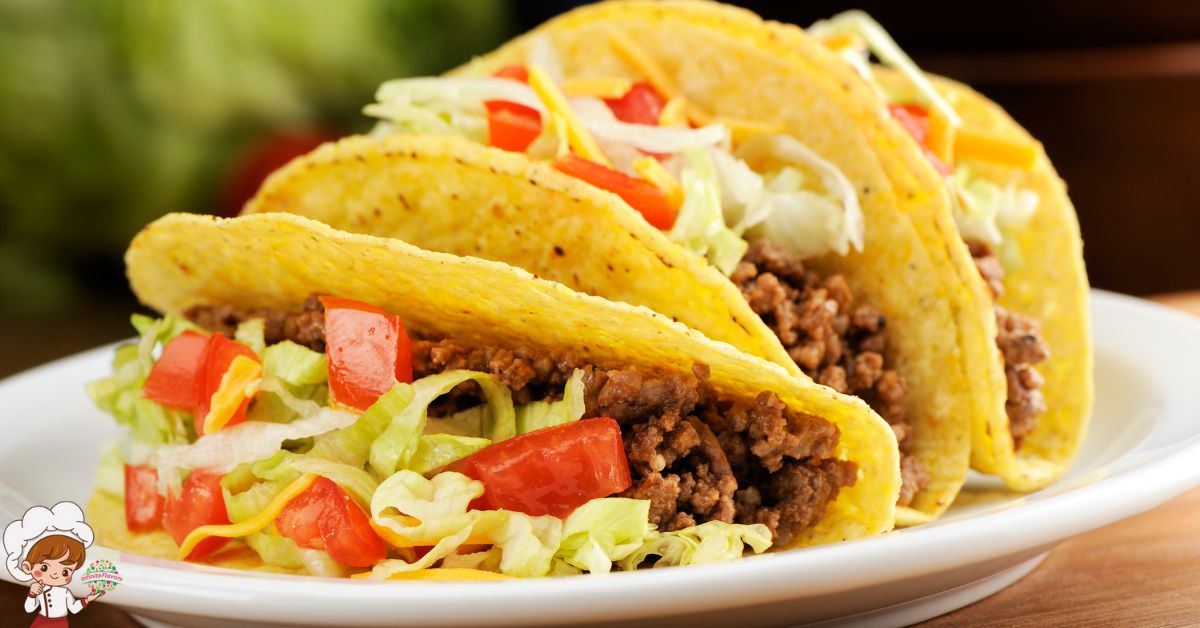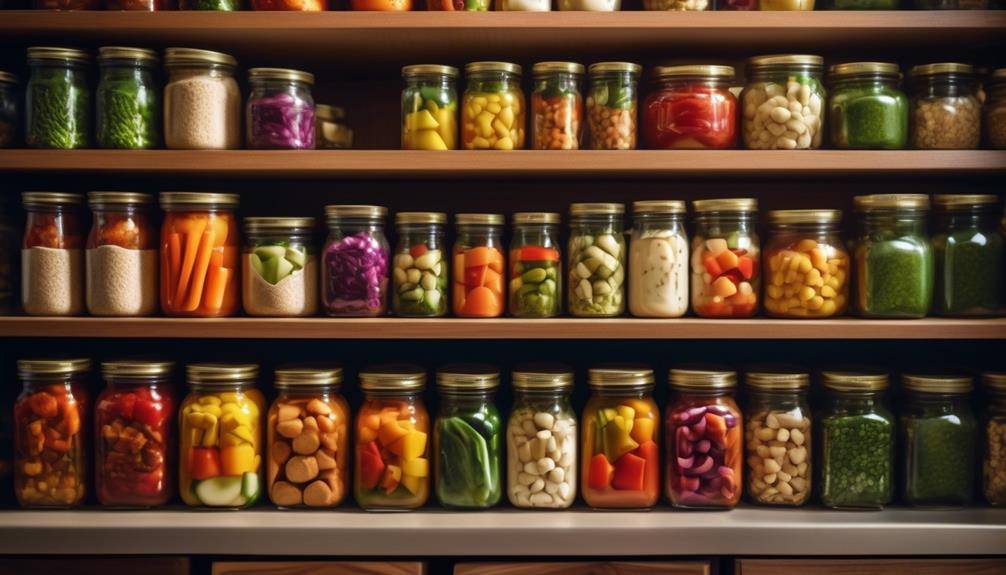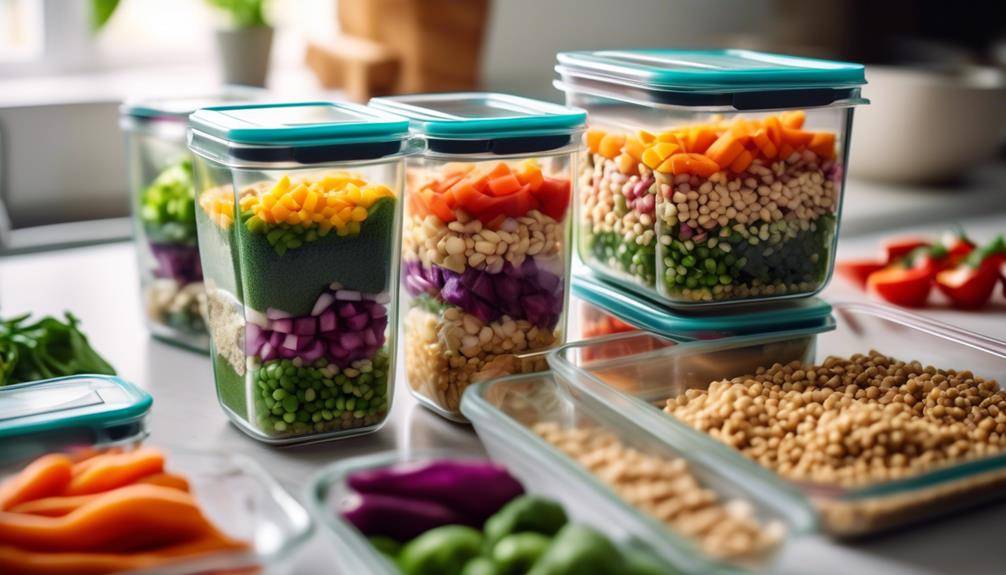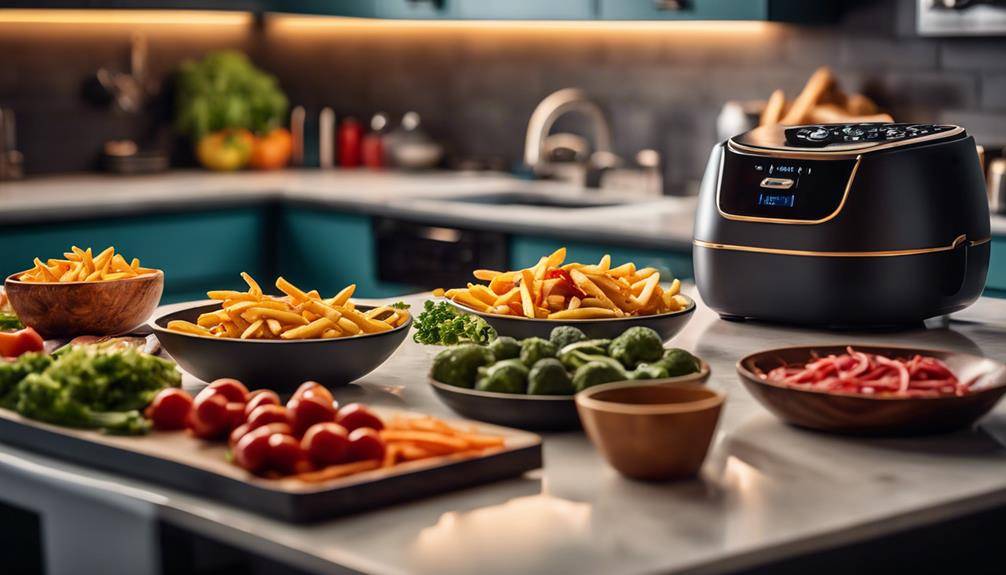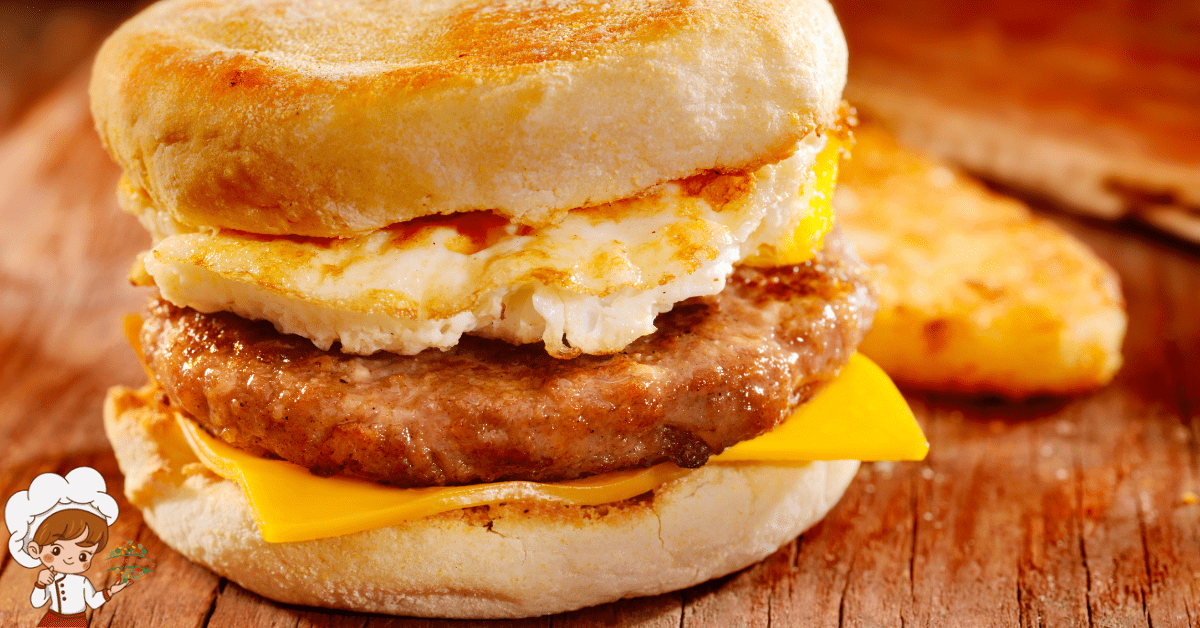Why Are Certain Techniques Better for Grilling Chicken
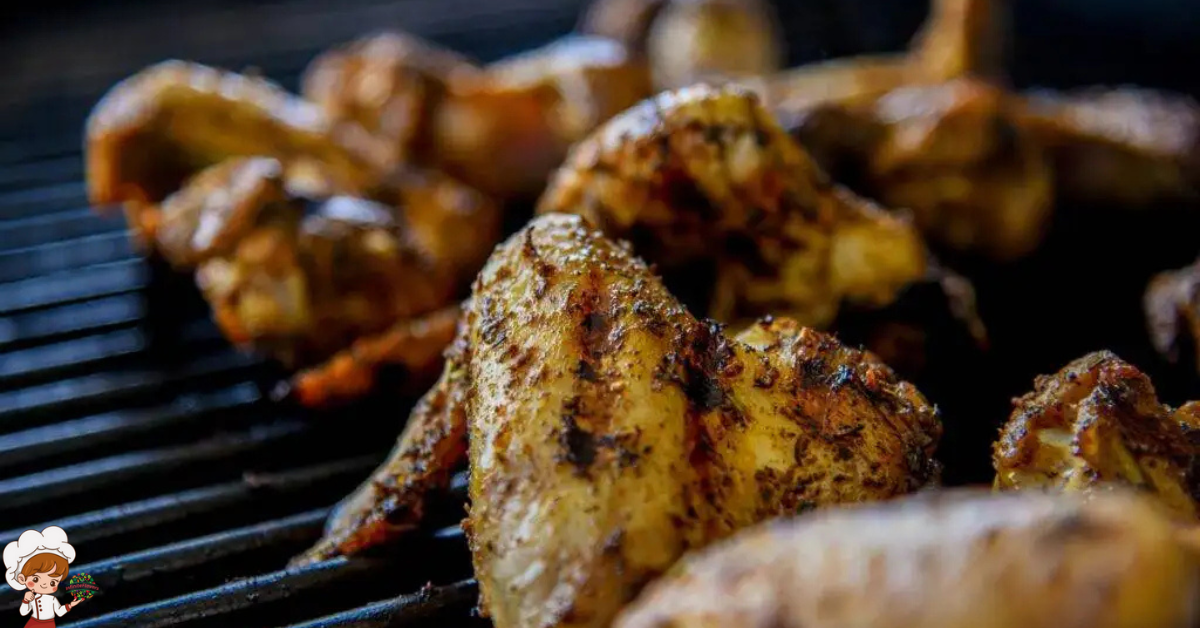
Why Are Certain Techniques Better for Grilling Chicken
Are you skeptical about the importance of using specific techniques when grilling chicken? Well, let us set the record straight. Certain techniques are indeed ideal for grilling chicken, and here’s why. When it comes to achieving juicy and flavorful chicken, brining is your secret weapon. Marinades, on the other hand, infuse the meat with delicious flavors. Indirect heat ensures that the chicken cooks evenly without drying out, while dry rubs add an irresistible crust.
Spatchcocking allows for quicker and more even cooking. Using a meat thermometer guarantees that your chicken is cooked to perfection. Resting the meat after grilling helps retain its juices. Basting with marinades or sauces adds an extra layer of flavor. And finally, the Maillard reaction gives your chicken that mouthwatering golden-brown color. Now that you understand the reasons behind these techniques, you’ll be grilling chicken like a pro in no time!
Brining
If you want to ensure juicy and flavorful grilled chicken every time, you should consider brining it beforehand. Brining is a process that involves soaking the chicken in a solution of salt and water. This technique offers numerous benefits and can significantly enhance the taste and texture of the meat.
One of the primary benefits of brining is that it helps to retain moisture in the chicken. The salt in the brine solution works by altering the protein structure, allowing the meat to hold onto more water during the cooking process. As a result, the chicken becomes incredibly juicy and tender, even when exposed to high heat on the grill.
Brining also enhances the flavor of the chicken. The salt in the brine not only adds a savory taste but also allows the meat to absorb other flavors more effectively. You can experiment with different herbs, spices, and aromatics in the brine to infuse the chicken with a range of delicious flavors.
To brine chicken, start by dissolving salt in water to make a brine solution. The general rule of thumb is to use 1/4 cup of salt per 4 cups of water. Place the chicken in a container and pour the brine over it, making sure the meat is fully submerged. Refrigerate the chicken for at least 2 hours, or up to overnight for larger cuts. After brining, rinse the chicken thoroughly to remove excess salt, pat it dry, and then proceed with your preferred grilling method.
Marinades
To enhance the flavor and tenderness of your grilled chicken, consider marinating it with a variety of ingredients. Marinating is a technique that involves soaking the chicken in a seasoned liquid mixture before grilling. This process allows the flavors to penetrate the meat, resulting in a more flavorful and juicy chicken. Additionally, marinating can also help to tenderize the meat, making it more moist and easier to eat.
Here are three key factors to consider when marinating chicken for grilling:
- Grilling techniques: Marinating can greatly enhance the taste of grilled chicken, but it’s important to use the right grilling technique to achieve optimal results. Whether you’re using a gas grill, charcoal grill, or even a grill pan, make sure to preheat it properly and maintain the right temperature throughout the cooking process. This will help to ensure that the chicken cooks evenly and retains its moisture.
- Marinating times: The amount of time you marinate your chicken can significantly impact its flavor. Generally, it’s best to marinate chicken for at least 30 minutes to allow the flavors to infuse into the meat. However, for maximum flavor and tenderness, marinating for longer periods, such as overnight, can yield even better results. Just be sure not to over-marinate, as the acidity in the marinade can break down the proteins in the chicken, resulting in a mushy texture.
- Marinade ingredients: The ingredients you use in your marinade can greatly influence the taste of the grilled chicken. Consider using a combination of acidic ingredients like lemon juice or vinegar, which help to tenderize the meat, along with flavorful herbs and spices such as garlic, ginger, and paprika. You can also add a touch of sweetness with ingredients like honey or brown sugar. Experiment with different flavor profiles to find your favorite marinade recipe.
Indirect Heat
When grilling chicken, it is important to utilize indirect heat for optimal results. Indirect heat refers to a grilling technique where the heat source is placed away from the food, allowing for a slower and more gentle cooking process. This method offers several benefits that make it ideal for grilling chicken.
One of the main benefits of indirect grilling is that it helps to cook the chicken evenly. By placing the chicken away from the direct heat source, you can avoid the risk of burning or charring the outside while the inside remains undercooked. The indirect heat allows for a more gradual cooking process, ensuring that the chicken is cooked through without drying it out.
There are different methods of indirect grilling that you can use to achieve delicious and juicy grilled chicken. One popular method is the two-zone cooking method. This involves setting up your grill with a hot zone and a cooler zone. You start by searing the chicken over direct heat on the hot zone to get a nice char on the outside. Then, you move the chicken to the cooler zone to finish cooking it indirectly. This method allows for a nice crust while ensuring that the chicken is cooked through.
Another method is using a grill with an indirect heat feature, such as a gas grill with multiple burners or a charcoal grill with a charcoal basket. With these grills, you can create a heat source on one side and place the chicken on the other side, away from the direct heat. This way, the chicken cooks slowly and evenly, resulting in tender and flavorful meat.
Dry Rubs
For optimal flavor and seasoning, enhance your grilled chicken by applying a savory dry rub. Dry rubs are a mixture of herbs, spices, and other ingredients that add depth and complexity to your chicken. They are easy to make and can be customized to suit your taste preferences. Here are three different dry rub recipes that you can try:
- Classic BBQ Dry Rub:
- 2 tablespoons brown sugar
- 1 tablespoon paprika
- 1 tablespoon chili powder
- 1 teaspoon garlic powder
- 1 teaspoon onion powder
- 1 teaspoon salt
- 1/2 teaspoon black pepper
- 1/2 teaspoon cayenne pepper (optional)
- Mediterranean Herb Dry Rub:
- 2 tablespoons dried oregano
- 1 tablespoon dried thyme
- 1 tablespoon dried rosemary
- 1 tablespoon dried basil
- 1 teaspoon garlic powder
- 1 teaspoon onion powder
- 1 teaspoon salt
- 1/2 teaspoon black pepper
- Smoky Chipotle Dry Rub:
- 2 tablespoons smoked paprika
- 1 tablespoon chipotle chili powder
- 1 tablespoon brown sugar
- 1 teaspoon garlic powder
- 1 teaspoon onion powder
- 1 teaspoon salt
- 1/2 teaspoon black pepper
To use these dry rubs, simply coat your chicken evenly with the mixture before grilling. Allow the chicken to marinate for at least 30 minutes or overnight in the refrigerator for maximum flavor. The dry rub will create a delicious crust on the outside of the chicken while keeping it moist and flavorful on the inside.
Experiment with different dry rub combinations and adjust the ingredients to your liking. By adding a dry rub to your grilled chicken, you’ll take your flavor game to the next level. So, fire up the grill and enjoy the mouthwatering results!
Spatchcocking
Spatchcocking is a technique that involves removing the backbone of the chicken and flattening it out before grilling. This method offers several benefits. Firstly, the chicken cooks much faster and more evenly, reducing the risk of undercooked meat. Secondly, spatchcocking allows the chicken to retain more juices, resulting in a moist and flavorful end result. Lastly, the exposed skin gets crispy and delicious, adding another layer of texture to your grilled chicken.
Faster Cooking Time
To achieve faster cooking times on the grill, try spatchcocking your chicken. Spatchcocking is a technique where the backbone of the chicken is removed, allowing it to lay flat on the grill. This method has several advantages when it comes to faster cooking:
- Even heat distribution: By flattening the chicken, it ensures that the heat is evenly distributed, resulting in more consistent cooking and faster cooking times.
- Increased surface area: With the chicken lying flat, more of its surface area is exposed to the heat, allowing for quicker browning and a crispy skin.
- Flavor infusion: The direct contact with the grill allows for better flavor infusion as the juices and marinades get absorbed more efficiently.
Juicier Meat
Achieving juicier meat can be accomplished by utilizing the spatchcocking technique when grilling chicken. Spatchcocking involves removing the backbone of the chicken and flattening it out before grilling. This technique helps to distribute heat more evenly, resulting in meat that is cooked thoroughly and remains juicy.
When it comes to brining benefits, spatchcocking enhances the effectiveness of the brine. Brining is a process of soaking the chicken in a saltwater solution, which helps to tenderize the meat and infuse it with flavor. The flattened shape of the spatchcocked chicken allows the brine to penetrate the meat more thoroughly, resulting in juicier and more flavorful chicken.
Additionally, spatchcocking also improves the effectiveness of marinades. Marinades are typically used to enhance the flavor of the meat, and the flattened shape of the spatchcocked chicken allows the marinade to coat the meat more evenly. This leads to a more flavorful and juicy end result.
Crispy Skin
To achieve crispy skin when grilling chicken, you’ll want to try spatchcocking. This technique involves removing the backbone of the chicken and flattening it out before cooking. Here’s why spatchcocking is ideal for achieving crispy skin and flavor enhancement:
- Even cooking: By flattening the chicken, it ensures that the heat is evenly distributed, resulting in crispy skin all over. No more undercooked or rubbery skin!
- Faster cooking time: Spatchcocking reduces the cooking time as the chicken is spread out in a single layer. This means the skin has more time to crisp up while the meat stays juicy and tender.
- Flavor enhancement: The flat position of the chicken allows for better contact with the grill, creating a beautiful charred flavor and enhancing the overall taste of the dish.
Spatchcocking is a simple yet effective technique that guarantees crispy skin and a deliciously flavorful grilled chicken. Give it a try and elevate your grilling game!
Using a Meat Thermometer
Make sure you use a meat thermometer to accurately gauge the internal temperature of your grilled chicken. This is an essential tool for ensuring that your chicken is cooked to perfection, with no risk of undercooking or overcooking. The internal temperature of the meat is a crucial factor in determining its doneness and safety for consumption.
When using a meat thermometer, it is important to insert it into the thickest part of the chicken, making sure not to touch any bones. This will give you the most accurate reading of the meat’s temperature. The USDA recommends cooking chicken to an internal temperature of 165°F (74°C) to ensure that any harmful bacteria present in the meat are killed off. This is the minimum safe temperature for poultry.
By using a meat thermometer, you can avoid the common pitfalls of relying solely on cooking time or appearance to determine if your chicken is cooked. Different factors such as the size of the chicken, the thickness of the meat, and the heat of your grill can affect the cooking time. With a meat thermometer, you can be confident that your chicken is cooked to the proper temperature, regardless of these variables.
Not only does a meat thermometer ensure food safety, but it also helps you achieve the desired level of doneness. If you prefer your chicken to be juicy and tender, you can remove it from the grill when it reaches an internal temperature of 160°F (71°C), as the residual heat will continue to cook the meat to the recommended 165°F (74°C).
Resting the Meat
Resting the meat after grilling is a crucial step to achieving juicy and tender chicken. When you allow the chicken to rest, it allows the juices to redistribute evenly throughout the meat, resulting in a more flavorful and moist final product. Resting also helps to ensure that the chicken is cooked evenly, as it allows for residual heat to continue cooking the meat while it rests. So, don’t skip this important step if you want perfectly grilled chicken every time.
Resting Enhances Juiciness
Enhancing the juiciness of grilled chicken is achieved by allowing the meat to rest. Resting the meat after grilling is a crucial step that should not be overlooked. Here’s why resting benefits the juiciness of the chicken:
- Retains Moisture: Resting allows the juices in the meat to redistribute, making the chicken more tender and juicy. This helps prevent the meat from drying out when you cut into it.
- Enhanced Flavor: Resting allows the flavors to develop further as the chicken continues to cook internally. This results in a more flavorful and succulent bite.
- Even Cooking: Resting the meat helps ensure that the heat is evenly distributed throughout, allowing for a more consistent cook. This helps avoid overcooking and undercooking certain parts of the chicken.
To maximize the benefits of resting, cover the chicken loosely with aluminum foil and let it rest for about 5-10 minutes before serving. This simple technique will greatly enhance the juiciness of your grilled chicken.
Resting Improves Tenderness
How can resting the meat after grilling enhance the tenderness of your chicken? Resting the meat after grilling is a crucial step that allows the juices to redistribute throughout the chicken, resulting in improved tenderness.
When the chicken is cooked, the heat causes the juices to move towards the center of the meat. By letting the chicken rest for a few minutes before cutting into it, you allow the juices to evenly distribute again, leading to a more tender and flavorful bite. Resting also allows the muscle fibers to relax and reabsorb some of the moisture, contributing to the overall tenderness. The optimal resting duration for chicken is around five to ten minutes, depending on the size of the cuts. This brief resting period can make a significant difference in the tenderness of your grilled chicken.
Resting Allows Even Cooking
To achieve even cooking, let your grilled chicken rest for a few minutes before serving. Resting the meat is an essential step in cooking techniques that ensures the chicken remains tender and juicy throughout. Here’s why resting allows for even cooking:
- Retains Juices: Resting allows the juices to redistribute evenly throughout the chicken, resulting in a moist and flavorful bite.
- Continues Cooking: While resting, the residual heat continues to cook the chicken from within, ensuring it reaches the desired internal temperature without overcooking the outer layers.
- Relaxes Muscles: Resting relaxes the muscle fibers in the chicken, making it easier to slice or serve without the juices running out.
Basting
One way to enhance the flavor and juiciness of your grilled chicken is by basting it throughout the cooking process. Basting involves applying a liquid mixture or sauce to the chicken while it is cooking on the grill. This technique not only infuses the chicken with additional flavor but also helps to keep it moist and prevent it from drying out.
There are various basting techniques that you can use when grilling chicken. One popular method is to use a basting brush to apply the sauce or marinade onto the chicken. This allows for even distribution and ensures that every piece of chicken is coated with the flavorful mixture. Another technique is to use a spray bottle to mist the chicken with the basting liquid. This method helps to create a fine and even layer of flavor on the chicken’s surface.
Basting offers several benefits when grilling chicken. Firstly, it adds moisture to the chicken, preventing it from becoming dry and tough. The liquid mixture or sauce helps to lock in the natural juices of the chicken, resulting in a more succulent and tender final product. Additionally, basting imparts flavor to the chicken, enhancing its taste and making it more enjoyable to eat. The sauce or marinade can contain various herbs, spices, or seasonings that complement the chicken and create a delicious flavor profile.
To achieve the best results when basting chicken, it is important to baste regularly throughout the cooking process. This ensures that the chicken stays moist and flavorful. However, it is essential to balance the frequency of basting to avoid excessive dripping or flare-ups on the grill. By incorporating basting into your grilling routine, you can elevate the taste and texture of your grilled chicken to new heights.
The Maillard Reaction
When grilling chicken, it is important to understand the role of the Maillard reaction in achieving deliciously caramelized and flavorful results. The Maillard reaction is a chemical reaction that occurs when proteins and sugars are exposed to high heat. This browning process is responsible for the rich flavors and enticing aromas that make grilled chicken so irresistible. Here’s why the Maillard reaction is crucial for flavor development:
- Flavor Complexity: The Maillard reaction creates a wide range of complex flavors that enhance the taste of grilled chicken. As the proteins and sugars react, they produce new compounds that give the chicken a savory, nutty, and slightly sweet flavor profile. These flavors deepen and intensify as the chicken continues to cook on the grill.
- Caramelization: The Maillard reaction also plays a key role in caramelization, which is the process of turning sugars into a golden brown color. This adds a pleasant sweetness to the grilled chicken, balancing out the savory flavors and creating a delectable combination.
- Aroma Enhancement: As the Maillard reaction occurs, it releases a variety of volatile compounds that contribute to the mouthwatering aromas of grilled chicken. These compounds stimulate our sense of smell, making the chicken even more enticing and appetizing.
Frequently Asked Questions
How Long Should I Brine Chicken Before Grilling It?
Brine chicken before grilling for at least 30 minutes to enhance flavor and moisture. However, alternative methods like marinating or dry rubs can also add deliciousness. Experiment to find your preferred technique.
What Types of Marinades Work Best for Grilling Chicken?
To achieve the best flavor when grilling chicken, it’s crucial to choose the right marinade. The importance of marinating cannot be overstated, as it helps to tenderize the meat and infuse it with delicious flavors.
Can I Use Direct Heat Instead of Indirect Heat to Grill Chicken?
Yes, you can use direct heat instead of indirect heat to grill chicken. Direct heat is ideal for grilling chicken because it creates a crispy outer layer while retaining the juiciness inside.
What Are Some Common Ingredients Used in Dry Rubs for Grilling Chicken?
To make a flavorful dry rub for grilling chicken, you can use a variety of spices like paprika, garlic powder, and cayenne pepper. When applying the rub, make sure to coat the chicken evenly for the best taste.
How Does Spatchcocking Affect the Cooking Time of Chicken on the Grill?
When you spatchcock a chicken, it reduces the cooking time on the grill. Brining the chicken beforehand adds moisture and flavor. Grilling with direct heat gives you a crispy skin, while indirect heat ensures even cooking. Common dry rub ingredients include paprika, garlic powder, and brown sugar.
Conclusion
In conclusion, utilizing techniques such as brining, marinades, indirect heat, dry rubs, spatchcocking, using a meat thermometer, resting the meat, basting, and understanding the Maillard reaction are all crucial for achieving the perfect grilled chicken. Each technique adds its own unique flavor, tenderness, and juiciness to the meat, resulting in a mouthwatering and satisfying dish. By incorporating these techniques into your grilling routine, you can elevate your chicken grilling game and impress your family and friends with delicious and succulent chicken every time.



